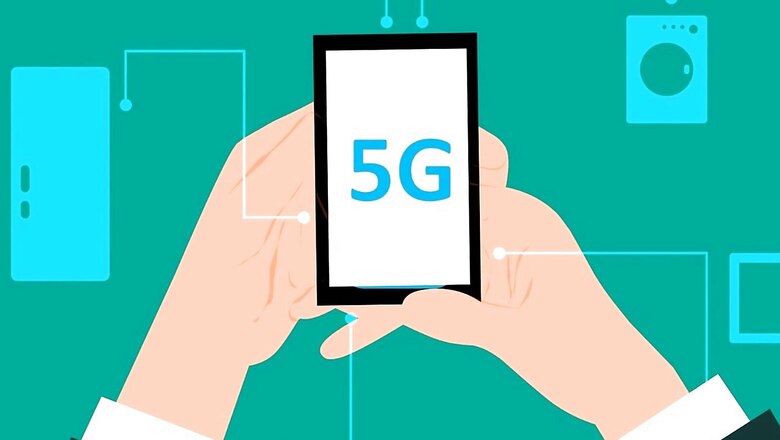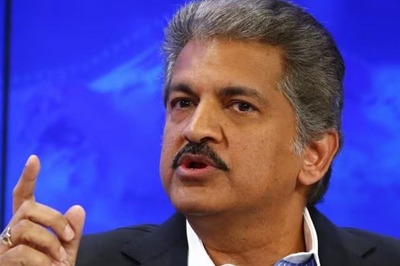
views
Since the launch of 5G in India, experts have been talking about how this next-generation technology will help Digital India, if it will reduce the digital divide and its overall impact in several sectors. Now, according to the latest Ericsson Mobility Report, 5G will constitute over 50 per cent mobile subscriptions in India by 2028.
It is said that global 5G subscriptions are on track to surpass one billion by the end of this year and five billion by the end of 2028.
The Ericsson Mobility Report for November 2022 predicts that global fixed wireless access (FWA) connections will grow faster than previously anticipated.
It is noteworthy that the FWA is the wireless alternative to wireline broadband connectivity for homes and businesses. It is one of the most important early 5G use cases, especially in areas with unserved or under-served broadband markets.
However, according to the report, FWA is expected to grow at a 19 per cent year-on-year rate through 2022-28, surpassing 300 million connections by the end of 2028, owing in part to accelerated FWA plans in India and expected growth in other emerging markets.
The report noted that FWA services are currently offered by more than three-quarters of communications service providers (CSPs) surveyed in over 100 countries.
FWA over 5G is now offered by nearly one-third of CSPs, up from one-fifth a year ago. Almost 40 per cent of new 5G FWA launches in the last year have occurred in emerging markets.
In the case of India, it is stated that rapid 5G deployments by Indian service providers will allow for 31 million 5G subscriptions by the end of 2022 and 690 million by the end of 2028. By the end of 2028, 5G will account for approximately 53 per cent of mobile subscriptions.
Meanwhile, 4G subscriptions are expected to peak at around 930 million in 2024 before declining to an estimated 570 million by 2028.
Nitin Bansal, Head of Ericsson India and Head of Network Solutions for Southeast Asia, Oceania and India, Ericsson said: “Mobile networks continue to play a pivotal role in driving social and economic inclusion.”
According to him, 5G will play a crucial role in achieving India’s digital inclusion goals, especially in bringing broadband to rural and remote homes. Additionally, it is understood that enhanced mobile broadband is serving as the foundation for the government’s ‘Digital India’ vision by enabling people to access public services.
“Enhanced mobile broadband (eMBB) and fixed wireless access (FWA) are expected to be the early use-cases for 5G in India which will help address the concern of the limited fixed broadband penetration levels in the country and improve the data experience while on the move,” he added.
The average data traffic per smartphone in India is the highest in the world and it is expected to grow at a 14 per cent CAGR from 25 GB per month in 2022 to around 54 GB per month in 2028.
Additionally, the report noted that the total mobile data traffic in the India region is expected to grow at a 19 per cent CAGR from 18 EB per month in 2022 to 53 EB per month in 2028.
It is said that this is due to rapid growth in the number of smartphone users as well as an increase in average smartphone usage. Smartphone subscriptions in India are expected to rise from 77 per cent in 2022 to 94 per cent in 2028 as a percentage of total mobile subscriptions.
Here it should be noted that after the launch of 5G in October, many experts predicted that 5G will provide opportunities for the country and its associated businesses, including MSMEs, start-ups, and creator industries, as well as the benefits of digital technology and revolution in both urban and rural India.
One of the industry experts told News18 earlier this year that the government has set an aggressive goal of 80 per cent coverage in a short period of time and if it is achieved, it will immensely help rural India since a lot of the areas will be covered.
Another expert stated that the fast adoption of 5G will also provide impetus to the government’s goal of becoming a $5 trillion economy by 2025.
However, Ericsson’s Report also emphasises the significance of minimising environmental impact. It said the telecommunications sector has a critical role to play in achieving global sustainability goals, both by reducing its own emissions and by reducing carbon emissions in other industries.
The report highlighted the fact that to reduce the environmental impact of growing data traffic, smart network modernisation combined with a balanced approach to network performance is required.
Read all the Latest Tech News here


















Comments
0 comment